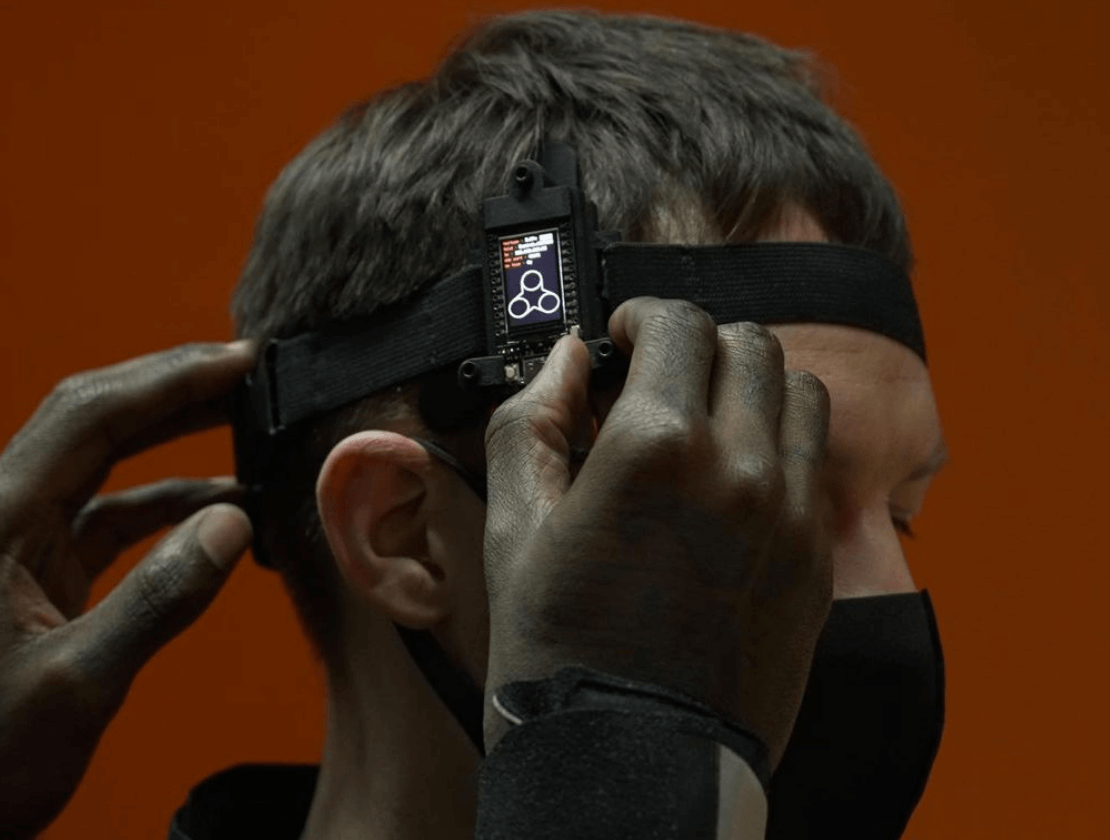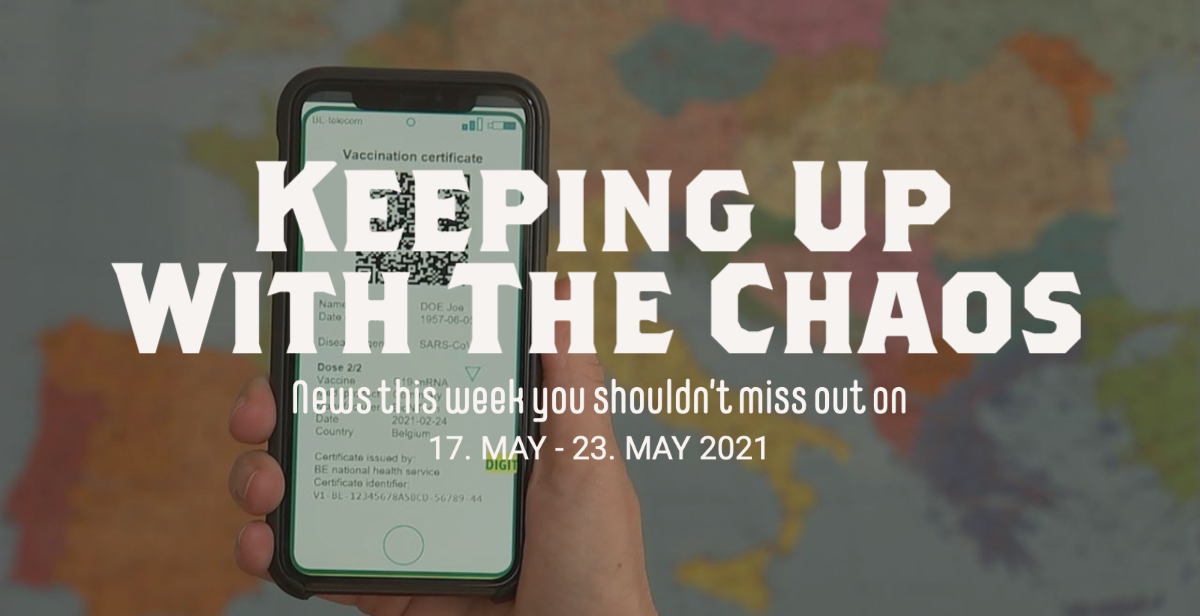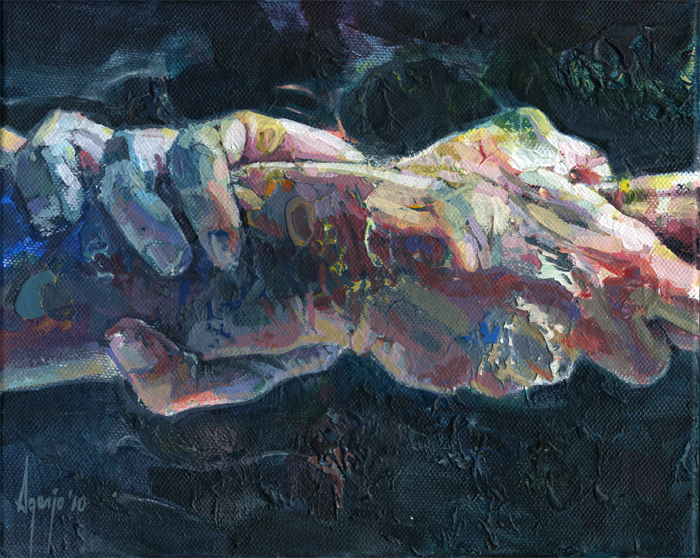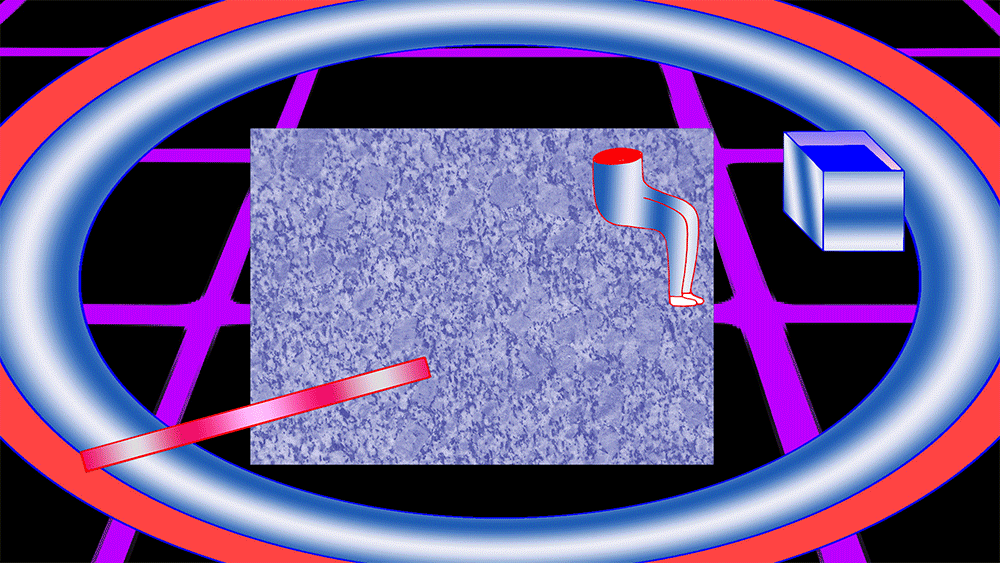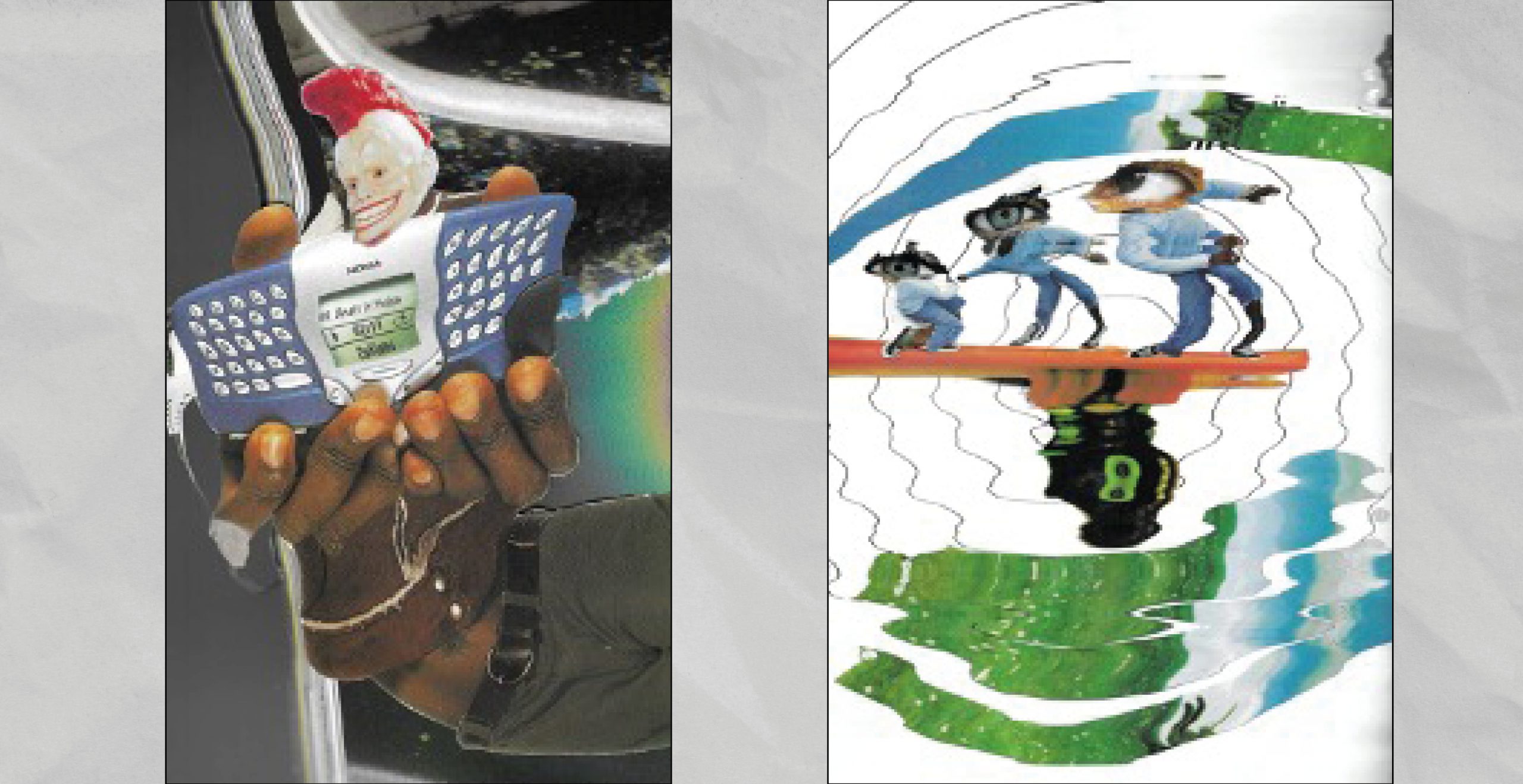The artist and co-founder of “eightos” Dmitry Paranyushkin codes movements and ideas. Swarm dynamics undulating in tension and release. Eightos is an open source operating system for the bodymind. Using network analysis he explores the cognitive and the material level. Members of a group interacting like an organism. The entity is moving while the machine is learning. Their gravity weaving the threads and open space forming a spiderweb. Dmitry creates new tools of learning by decoding reality into a cloud.
Finding a place to readjust, what animal, plant or fungus comes first to your mind?
Slime molds and cats. They can change their shape and forcefully respond. First they retract or buckle to build up pressure, before repulsing back.
When did you start working with networks ?
I had a teacher at my university who introduced us to graph theory and relations between objects. At some point later, I practiced Japanese Butoh dance with Imre Thormann. His movement practice establishes relationships between the various parts of our body. It reminded me of data links. I started to experiment with my body to map and think in terms of a network. From the cells and the brain to societies and knowledge.
What fascinated you as a child?
First the emotion of learning something new, the eureka moment. As a child it is essential to feel empowered and to understand. To have a source of positive emotions. Studying with a person, a book or in nature – they work in a tandem for me. Today when I look at the branches, I can notice that they follow a simple fractal logic resulting in a complex living structure. Submerged into water, I heart the silence, spreading the arms and legs. My body parts touching the surface, becoming a liquid entity for a short moment.
Who is behind eightos?
It’s myself, my partner Koo Des, and the people who like to practice with us. Behind all this is nature. Waves and undulations are at the origin of life. We just create situations and contexts to release energies and let them play together. Space as a physical boundary to push against, to explore and to escape. Meanwhile the floor allows us to interface with gravity. Cold concrete, a big space with round corners – a cave or some kind of cavity.
What would you call your own language?
My language is based on patterns and codes that are rooted in the body. It operates with the level of sensations but it uses the machine.
Please explain the “regenerative breathing technique”?
We use breathing in our practice as a recovery mechanism. When you are tense or you stop breathing, there is no movement in the body. In order to recover, you send fast ripple-like impulses, inhaling and exhaling in an intensified way. So you shake off the tightness and set up a rhythmical process that will take over the rest. It can help to recover the oxygen in the blood to the saturation level of 96-99%. In whatever situation you find yourself in, all you have to do is to introduce this process with a short-lived intensity and a fast-paced rhythm. It will take over and allow you to have a temporary out-of-context experience that can be used to reflect on your position and further trajectory.
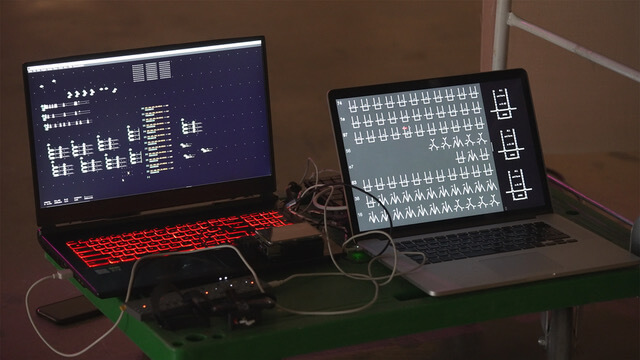
How can we reprogram ourselves with the assistance of our bodies?
Through practicing a different sort of reflex. An intellectual understanding of a concept will always be slower than a habit incorporated through the senses. I might know that something is hot, but it’s my body that will realize much earlier whatever is necessary to put myself into a safe position. The physical level illustrates what adaptation and de-escalation can mean. It demonstrates the reflexes that we have in these situations. We store these new habits. The next time we try that approach, we don’t have to think. Our bodies respond automatically. Then we use our mind to transfer this knowledge into other contexts. Beyond of the physical realm, it can transform the way we think and act. With others and alone.
What is the “backwards forest” practice ?
This exercise is an integral part of eightos. It teaches assimilation and resilience. Once you enter a forest that is not too dense, close your eyes and slowly start walking backwards. When you encounter a tree or an object, flow around it. As if you were water. Never resisting, always passing through. It helps you to have a constant rhythm of breathing. While you feel like fluid, you have your own dynamics to focus on and you don’t get distracted by fear and anticipations. Then open your eyes and you will return into the world with the same attitude as you had towards the trees. Reprogramming through nature and upgrading organic firmware makes you feel in harmony with existence.
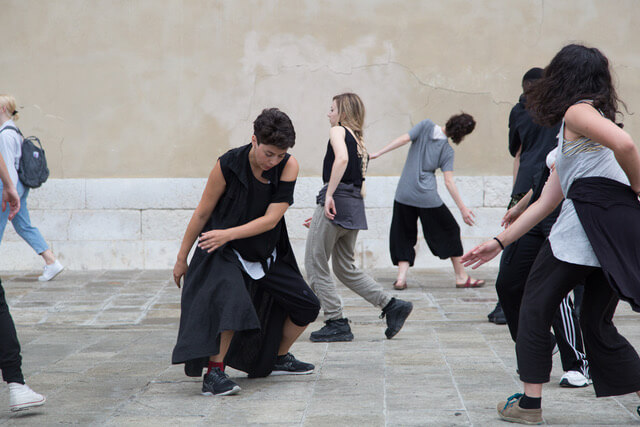
What does ideology and the cooperate world share?
Ideology does not have to be a social phenomenon. It is also a thing on its own. The set of ideas I choose. As soon as I am acting, I am testing one’s ideology. I don’t believe in totalitarianism. When someone tells me how things are, I don’t follow. The most ecological way to be, is allowing differences to co-exist. There is not one ideology, there can be two or three. Together they enter into a debate and trade ideas. This is how things evolve.
What are possibilities for merging natural and artificial intelligence?
A skull is the physical container that confines our brain. It´s structure is folded and interconnected. It is up to us to ensure that the artificial does not deviate too far from the natural. Often, biological systems have built-in limitations. Not slowing down, but rather making the organism versatile and resilient. The cycles of progression and decay sustain life on planet earth. An artificial intelligence system that adapts to rhythms and operates below 100% would be better for the environment.
How would you integrate tickling as a body contact into an eightos course?
It is a great way to exercise our ability to assimilate. Even if tickling is something that we cannot stand. With regenerative breathing we can de-escalate the giggling sensation. So that it doesn’t spill out too much.
You have previously worked with “xsens” motion trackers and haptic feedback sensors. How does it work and how can we use sensors to change our world?
One forming moment for a child is the encounter with a mirror. The ability to self-reflect. Other instruments for this are the motion tracking sensors. They assist to modify or aspire external standards. Imagine you have a mirror that would give you a snapshot of your dynamics for the last 30 seconds. Using these data you have information about changing your movements. This sort of feedback allows us to understand the nature of our dynamics. Giving you a score back how much variability your movement has. The feedback is provided through vision, sound or a haptic mode, so you can focus on the channel of perception you prefer and dance with the data.
Next: 14th October - 7th of November exhibition @ Galerie Wedding, 5th -7th November series of sessions @ Martin Gropius Bau More about eightos https://8os.io/








